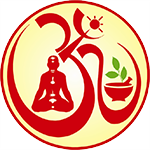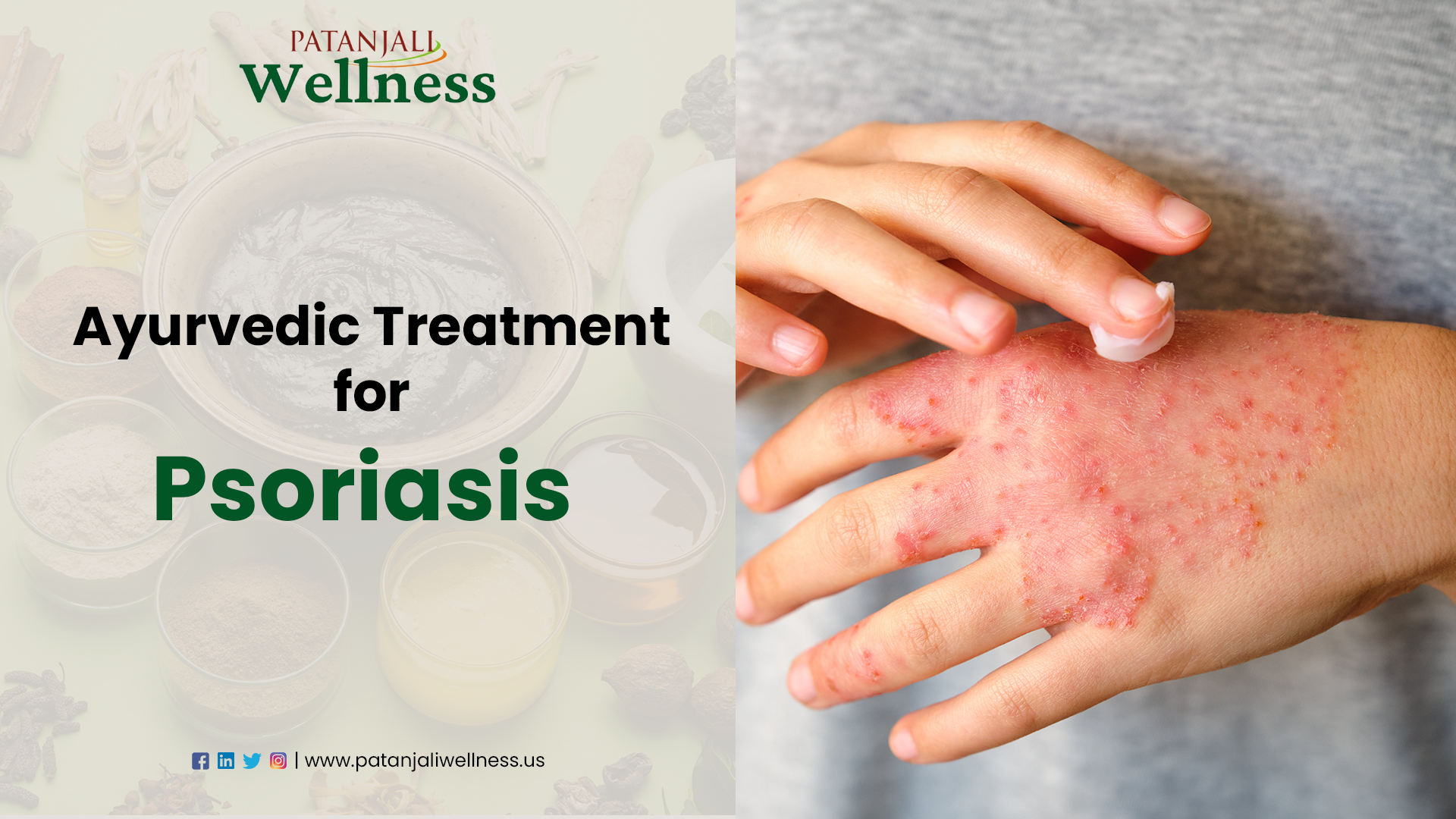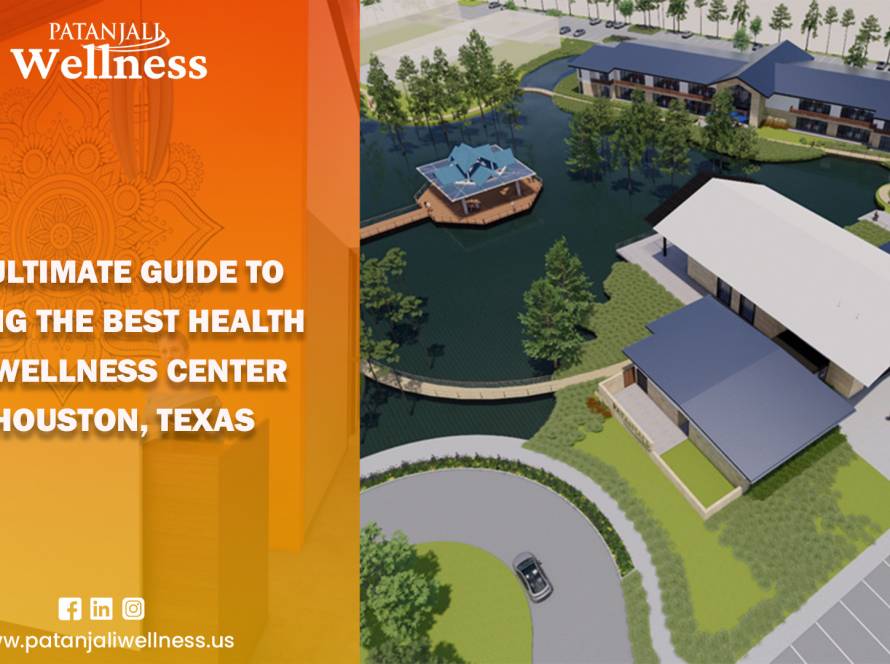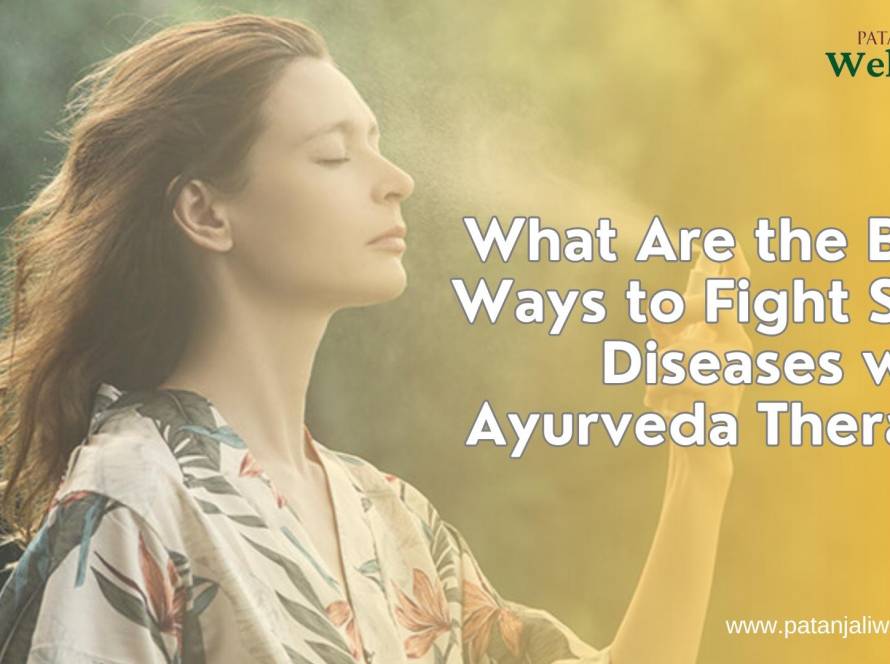People with psoriasis have red, itchy, flaky, cracked, and swollen skin. Silver-colored plaque starts appearing in the affected area, and the skin may sometimes bleed.
It is a chronic disease, which means its treatment procedures need time. The disease is related to the immune system as it gets overactive and produces more cells. Usually, it appears on the scalp, knees, elbows, palms, and other body parts.
Ayurveda says that Psoriasis is an imbalance of Vata Dosha and Kapha Dosha in the body. It is known as “Kitibha” in Ayurveda.
Ayurveda is an ancient form of treatment that is about 5,000 years old and was introduced in India. The Ayurvedic treatment procedures include a combination of herbs and natural oils suitable for all body types. Many Ayurveda therapies and massages have proven to improve physical and emotional health.
Psoriasis is a physical disease that affects a person’s mental health. Many Ayurvedic doctors say that all diseases need to be fought mentally before treating them from the outside. In such a situation, patients with Psoriasis can go for an Ayurvedic treatment to cure psoriasis naturally.
Types of Psoriasis
Plaque Psoriasis (Psoriasis Vulgaris)
Plaque psoriasis, or psoriasis vulgaris, is the most common type, making up 80% to 90% of cases. It has raised red spots on the skin that are covered in silvery-white scales. Plaques, these spots, can show up anywhere on the body, but they most often show up on the lower back, elbows, and knees.
Guttate Psoriasis
This type of psoriasis usually starts in childhood or early adulthood and is marked by small, red bumps that look like drops. It can happen all over the body and is often caused by bacterial illnesses like streptococcal throat infections.
Inverse Psoriasis
In inverse psoriasis, the sores are smooth and red and appear in skin folds, like under your arms, groin, or breasts. It happens more often in people who are overweight and gets worse when they sweat or rub against something.
Pustular Psoriasis
In pustular psoriasis, it gets spots on the skin that are full of pus. It can be limited to some body parts or spread to many parts. The skin is red and sore around the pustules.
Erythrodermic Psoriasis
Erythrodermic psoriasis is a very bad type that is rare and can spread to the whole body. It is marked by heat, extreme itching, and sheets of scales falling off. Erythrodermic psoriasis can be life-threatening and must be treated immediately by a doctor.
Nail Psoriasis
Psoriasis can also affect the nails, changing their color, making them thicker, and separating the nail from the nail bed. A nail may also get flaking.
Psoriatic Arthritis
Psoriatic arthritis is a disease that involves inflammation of the joints. It is not a type of psoriasis that affects the skin. People with psoriasis can get it, making their joints hurt, feel stiff, and swell up.
Symptoms of Psoriasis
Depending on the type of psoriasis a person has, their symptoms may be different, but some of the most common ones are:
- Skin Patches That Are Red and Swollen: Red and swollen skin is the most obvious sign of psoriasis. There may be silvery-white scales on top of these spots.
- Itching and irritation: People with psoriasis may have severe itching and irritation. Scratching the hurt places might make the situation worse.
- Dry Skin and Cracked: Skin with psoriasis is often dry and may crack or bleed. This can be incredibly annoying in places where joints move.
- Thickened or Pitted Nails: Psoriasis can change the nails by making them grow, darken, and separate from the nail bed. Pitting means small holes or dents in the nail.
- Burning or Soreness: Some people with psoriasis may feel like their skin is burning or hurting where it is.
- Scaling or flaking: People with psoriasis may lose scales or flakes on their skin, especially if they scratch or move the plaques around.
- Stiff or Swollen Joints: Joint pain, stiffness, and swelling can be caused by psoriatic arthritis, a similar disease that some people with psoriasis have.
- Lesions in Skin Folds: Inverse psoriasis often shows up in skin folds like the underarms, thighs, or under the breasts as red, smooth lesions.
- Pustules: There may be small blisters filled with pus called pustules on the skin.
- Erythema and Scaling Over Large Areas: Erythrodermic psoriasis is a severe and uncommon type that can make large parts of the body red, itch badly, and flake off.
Causes of Psoriasis
Even though no one knows what causes psoriasis, it is thought to be a mix of genetic, immune system, and environmental factors. Some of the main things that are known to cause psoriasis are listed below:
Genetics: Psoriasis is often caused by genes. People who have a history of psoriasis in their family are more likely to get it themselves. Psoriasis is linked to several genes, and some differences in these genes may make it more likely that someone will get the disease.
Immune System Dysfunction: People with psoriasis have an immune system that works too hard. What white blood cells (T cells) do in a healthy immune reaction is help protect the body from germs and viruses. But T cells work too hard in psoriasis and accidentally attack good skin cells. This speeds up the production of skin cells, making the plaques and scales stand out.
Environmental Triggers: Some external factors can cause or worsen psoriasis in people who are genetically more likely to get it. Common triggers include:
- Many types of infections exist, especially streptococcal illnesses (like strep throat).
- It’s called the Koebner effect when someone gets cuts, bruises, or burns on their skin.
- Stress can make psoriasis signs worse or cause them to start.
- Smoking and drinking too much alcohol.
Changes in Hormones: Changes in hormones, like those during puberty, pregnancy, and menopause, may affect when psoriasis starts or how bad it gets. Symptoms of psoriasis may get better during pregnancy but worsen after giving birth.
Medication: Some medicines, like lithium, antimalarial drugs, and beta-blockers, have been linked to making psoriasis worse or causing it to flare up in some people.
Ayurvedic Treatment for Psoriasis
Ayurvedic is an optional treatment for Psoriasis. If someone is suffering from a severe disease, then it is better to go for mainstream medical treatments. Here are some of the Ayurvedic treatments for Psoriasis.
- Consuming medicated ghee (butter).
- You can also consume herbal drinks and mixtures.
- Basthies are medical enemas made from herbs that are recommended to be taken for eight days.
- Ayurveda suggests having a “satvik bhojan” (purely vegetarian food) during the treatment process of Psoriasis. Also, stay away from spices and processed foods.
- Ayurveda recommends removing the impurities from the body by vomiting and purging.
- Mud therapy is one of the Ayurvedic treatment processes for Psoriasis.
- One can eat ginger and neem daily to get rid of Psoriasis.
Abhyanga (Ayurvedic Oil Massage) Therapy for Psoriasis
Ayurveda offers various massage therapies for different types of diseases, and it is believed that for every disease there are specific massage types depending on the body type. Ayurveda says that our human body is made up of different elements and they are divided into Vata, Pitta, and Kapha.
- Vata: Combination of air and space, which controls bodily functions
- Pitta: Combination of fire and earth, which controls metabolic functions
- Kapha: Combination of water and earth, which controls body growth
After identifying the body type, Psoriasis patients are suggested to go through different Abhyanga therapy to cure the skin disease. Some of the well-known Abhyanga therapies for Psoriasis are as follows:
Abhyanga (Ayurvedic Oil Massage)
As part of Abhyanga, warm medicinal oils are used to massage the body. Choices of oils are made based on the person’s dosha (Vata, Pitta, or Kapha) and the way their psoriasis looks and acts.
Benefits: Abhyanga feeds the skin, boosts blood flow, and eases the dryness and flaking that come with psoriasis.
Pizhichil (Oil Bath Treatment)
In pizhichil, a warm medicinal oil is poured over the body over and over again while it is being massaged. This treatment is usually done by two trainers.
Benefits: Pizhichil makes skin smoother, lowers redness, and helps people rest.
Takra Dhara (Medicated Buttermilk Treatment)
In this method, medicated buttermilk is poured over the face in a steady stream. It can be done with a light rub.
Benefits: This treatment is thought to cool the body, lower inflammation, and make it easier to deal with psoriasis symptoms.
Bashpa Swedana (Herbal Steam Bath)
Bashpa Swedana, also known as a “herbal steam bath,” is a practice in which you sit in a room filled with plant steam. After this, you can get a light massage.
Benefits: The plant steam helps clean the skin, open up pores, and improve blood flow, all of which may be good for psoriasis treatment.
Lepa (Medicated Paste Application)
In this method, a medicinal plant paste is applied to the hurt areas. The paste is put on the face and left there for a certain amount of time.
Benefits: Depending on the herbs used, lepa has qualities that reduce inflammation and soothe the skin.
Ayurvedic Therapy for Psoriasis
Ayurveda offers various treatments for internal and outer body diseases like psoriasis. To control Psoriasis, Ayurveda has made a specific Panchakarma treatment plan, which cures a person from the inner body through exterior massage therapies.
In the Panchakarma treatment process, Ayurvedic doctors use herbal mixtures and natural oils to cure the disease; they also recommend following a specific diet plan to get better results.
Here is an overview of Panchakarma treatment for Psoriasis. However, if you want to learn more about Panchakarma treatment, you can reach out to professionals at Patanjali Center in Houston.
- For 7 to 10 days, the person with Psoriasis should consume therapeutic ghee (butter) based on their Dosha type (body elements type).
- Vaman & Virechan: It makes the person vomit (Vamana) and empty their intestines (Virechana).
- Vasties (medicated enemas): Vasties are medicinal enemas done for 8–10 days. For at least 120–180 days, herbal formulas, herbal mixtures, and medicated ghee must be taken from the inside out.
For a Holistic Approach, Reach Out to the Patanjali Center
If you want an Ayurvedic treatment for Psoriasis and think that Ayurvedic massage therapy and procedures can help you, contact Ayurvedic doctors at Patanjali Center in Houston. Remember that all body types are different, and everyone needs a specific treatment for their health issues. It is better to go through a consultation process and proceed with further treatment.





